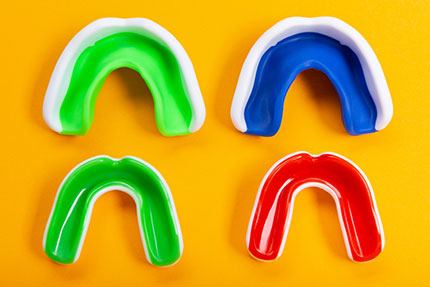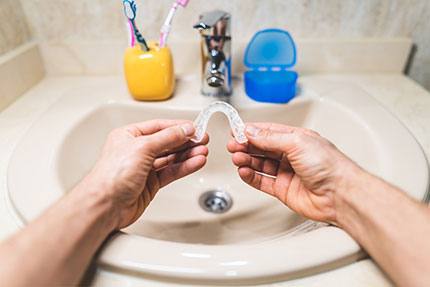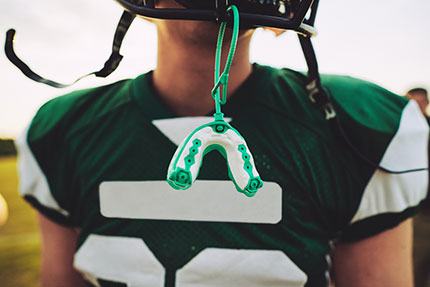Lacrosse is an exciting and fast-paced sport but also a contact sport.
Therefore, like many other contact sports, lacrosse requires players to wear protective gear to keep players safe from unnecessary injuries. Of all the protective equipment available for this sport, a mouthguard is one of the most important.
For athletes of all ages and skill levels, using the proper style of mouthguard is essential for ensuring players stay safe on the field.
This article will discuss the lacrosse mouthguard rules and provide helpful tips for purchasing and using them correctly.
More...
Take Away Key Points:
Equipment rules: necessary lacrosse player gear
Why is wearing a mouthguard necessary in lacrosse?

Wearing a mouthguard in lacrosse is an essential piece of safety equipment that helps protect players from serious injuries. Mouthguards help to protect the teeth, lips, cheeks, and tongue from impact and can also help reduce the risk of concussions. Mouthguards are required for both men's and women's lacrosse.
Mouthguards are designed to absorb shock and prevent damage to the jaw, teeth, and other parts of the face. They also help to keep players' mouths closed while playing so they can communicate on the field more effectively.
Additionally, studies have shown that athletes wearing mouthguards are 60 times less likely to sustain damage to their teeth than those who don't.
It's crucial for all lacrosse players and goalkeepers - both male and female - to wear a properly fitted mouthguard during games and practices. It's also essential for coaches, officials, and athletic trainers to educate athletes and parents on the importance of wearing a mouthguard.
Lacrosse mouthguard rules
According to NCAA rules and US Youth Lacrosse, all players (including goalies) must wear a mouthguard covering all of their upper teeth. This ensures optimal protection for players' teeth, lips, cheeks, and tongue from potentially damaging impacts during the game.
Additionally, the NCAA requires players to wear visible mouthguards. While NCAA mouthguards offer upper and lower teeth coverage, the NFHS only requires upper teeth coverage.
Athletes of all ages and skill levels need to wear a properly fitted mouthguard during games and practices to stay safe on the field. Not only do these protective devices help keep athletes safe from physical injury, but they also allow them to communicate more effectively while playing.
Types of lacrosse mouthguards
There are several types of lacrosse mouthguards available to protect players from injury. These include:
- Stock mouthguards: Stock mouthguards are the most affordable and basic option. These come pre-formed and tend to be less comfortable and effective than custom-fit mouthguards.
- Boil-and-bite mouthguards: Boil-and-bite mouthguards are made from a thermoplastic material that is heated in boiling water before being bitten into by the player so that it molds to their mouth shape. Although they provide more comfort than stock mouthguards, they may not provide an as accurate or secure fit and may not offer as much protection.
- Custom fit mouthguard: Custom fit mouthguards are designed by a dentist or lab technician specifically for a player's teeth alignment, providing better protection and improved comfort. However, these tend to be more expensive than the other options mentioned above.
Lacrosse mouthguard violation of rules

Mouthguard violation can lead to severe consequences. Although there are few exceptions, US Youth Lacrosse and NCAA are very strict regarding player safety; a player found not wearing a mouthguard, or wearing one that does not entirely cover their upper teeth, will be penalized and may be subject to disciplinary action.
Here are a few of the mouthguard violations of rules that can occur:
- A mouthguard violation will result in a 1-minute non-releasable equipment personal and technical foul, but not an unsportsmanlike conduct penalty.
- Mouth guards do not need to be attached to the face mask, they can cover all upper or lower teeth and must be worn while playing lacrosse.
- A mouth guard is considered an illegal procedure if it is worn out or altered so that it does not fully protect all of the upper or lower teeth or if the player is biting on the corners (aka "fish-hooking").
Similar penalties to mouthguard violation
Besides mouthguard violations, other penalties may include illegal equipment use, improper procedures, and illegal stick usage. These can lead to non-releasable personal and technical fouls and additional fines or suspensions.
FAQs
Are mouthguards required in lacrosse?
Yes, mouthguards are required by most lacrosse organizations and leagues. They must meet specific safety regulations and be worn while participating in games or practices.
Can you have a white mouthguard in lacrosse?
No, you cannot have white or clear mouthguards in lacrosse. These mouthguards are not allowed as regulatory by NCAA as they are not highly visible on the lacrosse field.
Do girls' lacrosse need mouthguards?
Yes, girls' lacrosse needs mouthguards. In women's lacrosse, all players must wear a properly fitting mouthguard to protect their teeth and mouth during play.
Which mouthguard is best for lacrosse?
The mouthguard that is best for lacrosse depends on the individual's needs. Most players prefer an over-the-counter, boil-and-bite mouthguard because of its comfort and custom fit. Teeth protection and speaking clearly with the mouthguard are also important considerations.

What is the best lacrosse mouthguard for braces?
The best lacrosse mouthguard for braces is a custom mouthguard. Orthodontic guards are designed to fit over braces, protecting the teeth and the brackets from damage during play. They also provided improved comfort and increased protection compared to standard boil-and-bite or ready-made guards.
Why do players not wear mouthguards?
Some lacrosse players may not wear mouthguards because they don't feel comfortable or because they don't think it is necessary. However, wearing a mouthguard can help protect the teeth and jaw from injury during contact sports, such as lacrosse. Therefore, wearing a mouthguard should always be considered when playing contact sports for optimal protection.
How do you attach a mouthguard to a lacrosse helmet?
Attaching a mouthguard to a lacrosse helmet is relatively simple and can be done in just a few steps:
- Start by ensuring the mouthguard fits your teeth properly and that it's not too loose or tight.
- Place the lower strap of the jaw guard underneath the chin pad of your lacrosse helmet, then thread it through both straps at the back with the buckle facing outwards.
- Make sure to pull both straps tight while still keeping them comfortable, then secure them with the buckle.
- Finally, check to ensure everything is securely in place before taking the field.
How to boil a mouthguard for lacrosse?
Boiling a mouthguard for lacrosse is necessary to get it to fit correctly and securely. To do this:
- Fill a pot with enough water to submerge the mouthguard completely, then bring the water to a boil.
- Once boiling, remove the pot from the heat and carefully place the mouthguard in the water.
- Let it sit for about 20 seconds before taking it out and allowing it to cool for a few minutes.
- Test-fit the guard, ensuring it fits your teeth well before attaching it to your helmet.
Which sports require mouthguards?
Many contact and collision sports, including football, lacrosse, soccer, basketball, ice hockey, field hockey, boxing, and wrestling, require athletes to wear a mouthguard. Bearing this in mind, players of these sports must invest in the right equipment to protect their teeth and mouths from injury.
Conclusion
In conclusion, using a mouthguard while playing lacrosse is essential to staying safe on the field.
Boiling it before use is essential to get it to fit correctly, and it should be tested before the game. It's also vital to invest in the right type of equipment to protect teeth and mouths.
Check all lacrosse mouthguard rules and be prepared for your next game.
